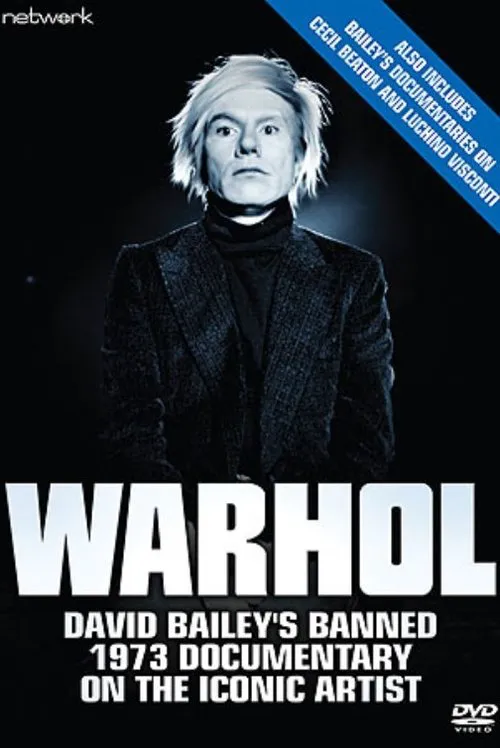Warhol

พล็อต
David Bailey's Warhol is a documentary film that takes an intimate look at the life of the enigmatic artist Andy Warhol during the early 1970s. The film showcases Bailey's unique perspective as he navigates the world of Warhol and his circle of followers, often referred to as "Superstars." Bailey's mission is to peel away the façade of Warhol's seemingly detached persona and reveal the person behind the icon. As Bailey begins to work on the documentary, he is granted unprecedented access to Warhol's inner circle, including Edie Sedgwick, Ultra Violet, and other prominent figures of the time. These early 1970s footage captures the vibrant atmosphere of Warhol's Factory, a place where creativity and chaos collide. Warhol's Factory becomes a hub for artists, musicians, and writers, all drawn to the magnetic energy emanating from the master of Pop Art. Throughout the documentary, Bailey captures Warhol's detached demeanor, a characteristic that often leads observers to misjudge him as aloof or indifferent. Bailey's portrayal, however, subtly suggests a man of immense curiosity and sensitivity, perpetually observing and reacting to the world around him. Warhol's detachment, it seems, is merely a front, a carefully crafted expression to protect himself from the chaos of his surroundings. One of the most striking aspects of the documentary is its exploration of Warhol's fascination with the concept of celebrity. As Bailey's camera follows Warhol, we witness his fascination with the likes of Elizabeth Taylor, Marilyn Monroe, and Edie Sedgwick. Warhol's interest lies not in their stardom, but in the way they embody the transience of fame and the fragility of human existence. Through Warhol's eyes, the camera captures the fleeting nature of celebrity, a momentary burst of light that ultimately succumbs to the darkness of obscurity. Bailey's relationship with Warhol is multifaceted and complex, oscillating between the roles of admirer, interviewer, and confidant. Bailey's access to Warhol is facilitated by their shared experiences as outsiders in a world of art and commerce. As Bailey navigates the intricate web of relationships within Warhol's Factory, he finds himself drawn into the artist's world, where the lines between reality and fiction blur. As Warhol navigates the documentary process, he begins to reveal glimpses of his own vulnerabilities and insecurities. Bailey's camera captures moments of tenderness, as Warhol opens up about his fears, his desires, and his deep-seated need for control. These moments of intimacy are fleeting, and Warhol's expressionless exterior soon reasserts itself. The documentary raises questions about the nature of art and celebrity in the 1970s. Warhol's work, which often incorporates elements of consumer culture, raises debates about the role of the artist, the commodification of art, and the tension between high and low culture. Through Bailey's lens, Warhol's art becomes a reflection of the era's obsession with celebrity, mass production, and the fragmentation of identity. As the documentary nears its conclusion, Bailey's access to Warhol begins to wane. The artist's fascination with the documentary process eventually gives way to his preoccupations with other projects. Bailey's camera captures the final moments of their collaboration, marked by a mixture of warmth and dispassion. In David Bailey's Warhol, the viewer is left to ponder the contradictions and complexities of Andy Warhol's persona. The documentary eschews a straightforward biography, opting instead for a nuanced exploration of Warhol's artistic philosophy and his place within the cultural landscape of the 1970s. Through Bailey's unique perspective, we glimpse the enigmatic figure behind the mask, a person both detached and deeply connected to the world around him. As the camera fades to black, we are left to ponder the many questions surrounding Warhol's art, his legacy, and the enduring mystique of an artist who continues to fascinate and intrigue us to this day.
วิจารณ์
คำแนะนำ


